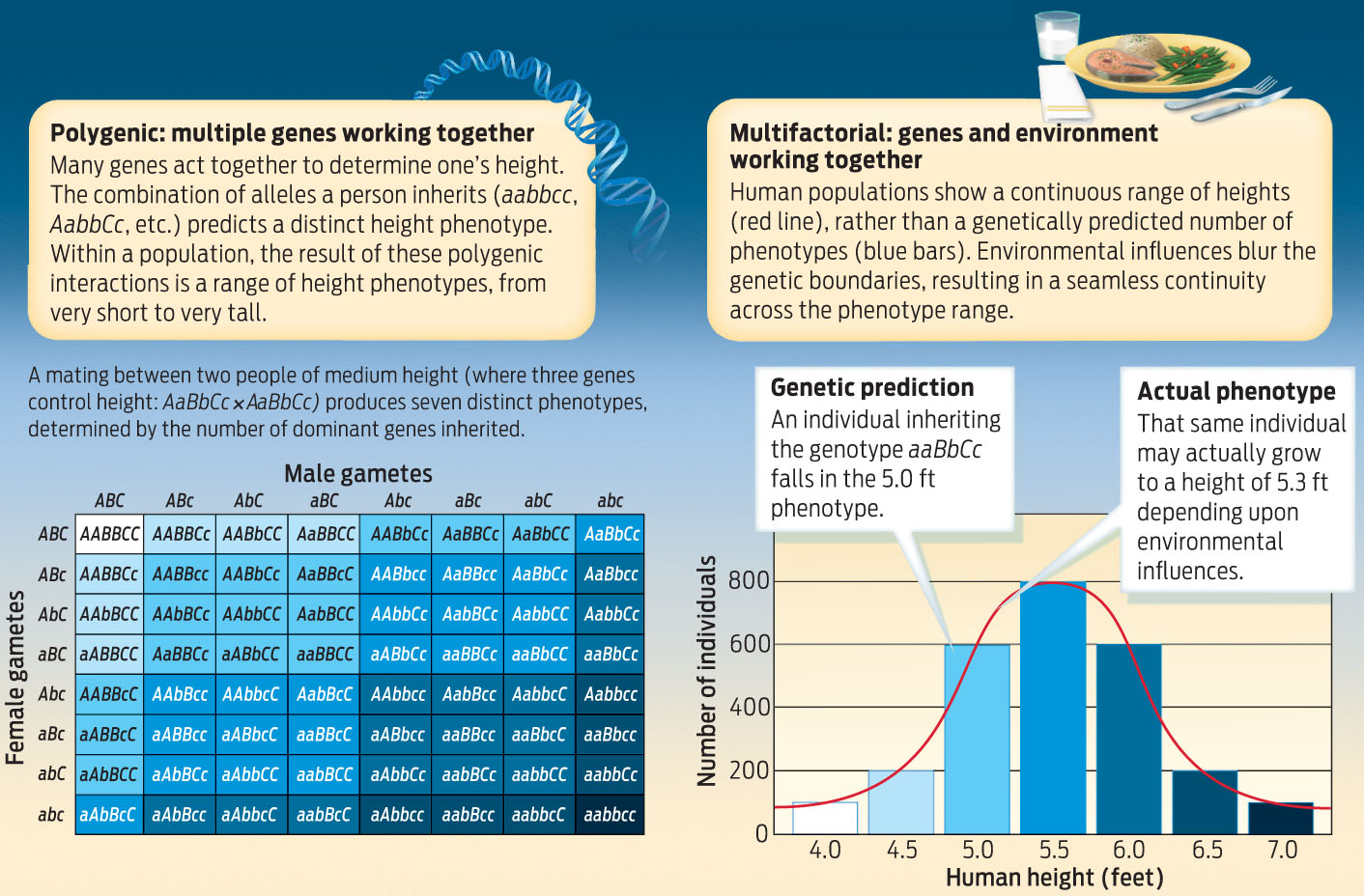Continuous Variation
 How much of human height is genetic?
How much of human height is genetic?
ANSWER: The short answer is, a lot. Geneticists estimate that height is 60% to 80% genetic. That is, genes account for 60% to 80% of the difference in height you see from person to person. But there isn’t one single gene that determines height—there are many: more than 20 different genes are thought to influence a person’s height, which is one reason why we see such a range of heights among us.
CONTINUOUS VARIATION Variation in a population showing an unbroken range of phenotypes rather than discrete categories.
271
POLYGENIC TRAIT A trait whose phenotype is determined by the interaction among alleles of more than one gene.
In the United States, most people are between 5 feet and 6.2 feet tall, and women tend to be shorter than men. If height is plotted on a graph, the result resembles a bell curve, with a range of heights and the heights of most people falling near the middle of the curve at the top of the bell. In other words, height is a trait that shows continuous variation in the population. This is in contrast to the discrete, or discontinuous, traits we’ve encountered, in which individuals have one of only two or three possible phenotypes for a given trait—Mendel’s round or wrinkled peas, or AB blood type, for example. Why does height show an unbroken range of phenotypes rather than discrete categories like tall or short? The main reason is that human height is a polygenic trait—one that is influenced by more than one gene. When multiple genes act together, their effects add up to produce a range of phenotypes. Other examples of polygenic traits are skin color and eye color.
The fact that height is largely genetic means that, all other things being equal, two tall parents are very likely to have a child who is also tall; same with two short parents. If you were to plot the height of students in your class against the average of their parents’ height, most tall children would come from tall parents, and most short children would come from short parents. But genes aren’t the whole story.

Even though 60% to 80% of the variation we see in height is due to genes, another 20% to 40% is due to environmental factors such as nutrition. Why do these estimates of environmental influence vary so much? The answer is that it depends on what environment you’re talking about. In developed countries, where most people have access to adequate nutrition, height is more than 80% inherited, or heritable. This means that when scientists compare the height of a person to his or her relatives, they find that height varies less than 20% among close relatives. In developing countries, where many people are still malnourished, environment plays a larger role. Another way of looking at this is that more people in developed countries have reached their genetic potential than people in developing countries because most of us in the developed world have access to adequate nutrition. In developing countries, access to nutrition varies much more, and this variation is reflected in larger variations in height between a given person and his or her relatives. The average height of the U.S. population has almost leveled off in the past decade, suggesting that the environment has almost maximized the genetic potential of height in this country.
MULTIFACTORIAL INHERITANCE An interaction between genes and the environment that contributes to a phenotype or trait.
272
When both genes and environment work together to influence a given trait, the trait is described as multifactorial. So height is both polygenic and multifactorial. Many polygenic traits, such as height and skin color, are influenced by both genes and the environment and thus may be considered multifactorial (INFOGRAPHIC 12.9) .
Multiple genes as well as environmental factors such as diet, nutrition, and overall health act together to determine how tall we become.
